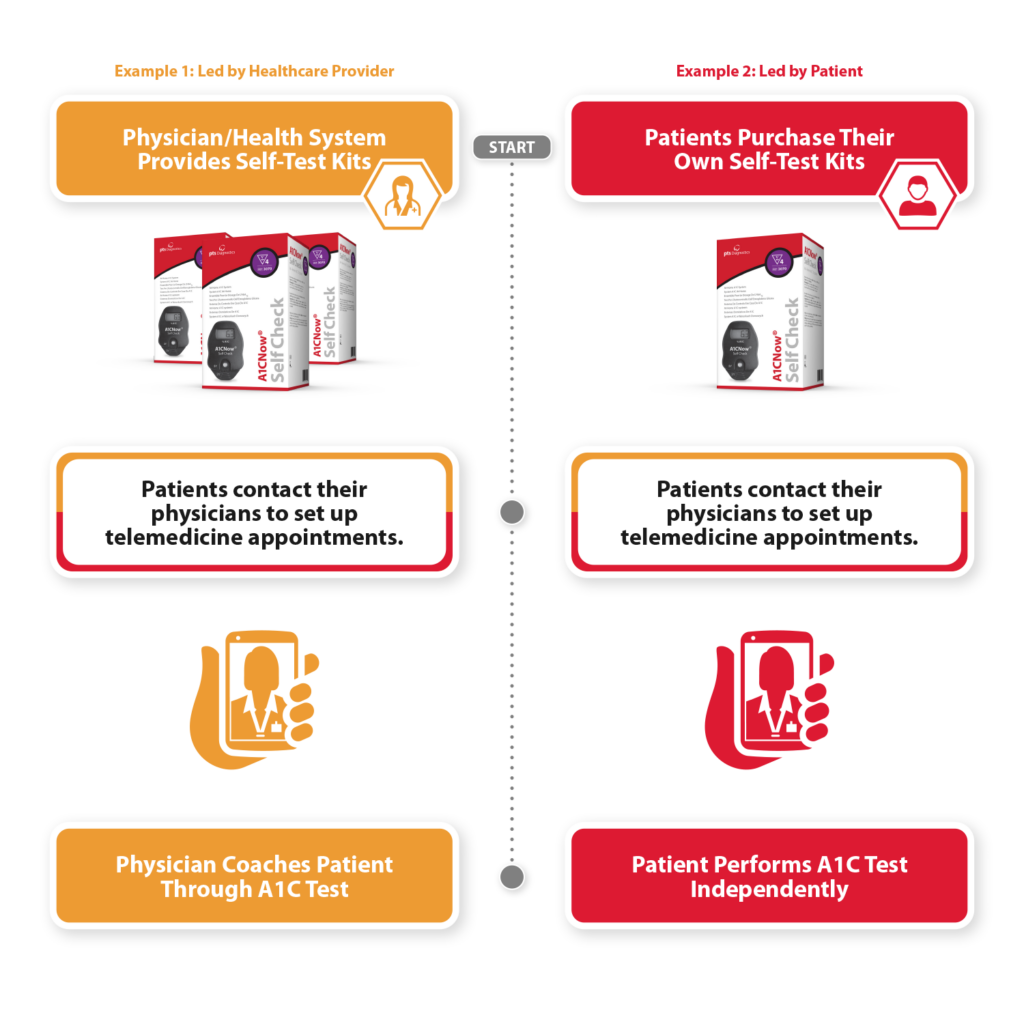
Most people with diabetes are used to making careful decisions about their health.
Together with their healthcare providers, they plan what to eat, how much to exercise, how often to test their blood glucose and A1C, and whether they need changes in their care plan.
Prior to the COVID-19 pandemic, patients likely visited their healthcare provider’s office in-person on a regular basis. Unfortunately, people with diabetes are at greater risk of suffering severe complications from COVID-19,1 which has left many patients and their physicians stuck in a bit of a catch-22:
Attend face-to-face appointments and risk contracting COVID-19?
Or
Skip in-person appointments and risk the complications that can develop when diabetes is not well-monitored and managed?
Luckily, there is another option.
A1C Testing and Telemedicine
Most patients with diabetes are accustomed to running their own blood glucose tests at home—often multiple times a day. But, when it comes to A1C testing, they can often expect to get lab orders from their physician, show up for another appointment, and wait for results.
Before COVID-19, this approach to A1C testing was inconvenient, at best. But, in the new post-COVID world, it’s more than inconvenient— it’s a potential risk to a patient’s health.1
At-home tests (like A1CNow® Self Check) can be purchased online or at national pharmacy chains. These at-home A1C tests require only a fingerstick—much like blood glucose tests—and are easy to use. Studies have also shown them to be as accurate as lab tests.2
And there are many ways an at-home A1C test can be used in conjunction with a virtual doctor’s appointment. Here are just a couple of examples:

A1C Anywhere
The quick shift to telemedicine during the pandemic has been challenging, but it has also opened new possibilities for meeting patients right where they are. The flexibility of at-home testing can help patients overcome other common hurdles—like financial, time, or transportation constraints—to attending in-office lab appointments.
Now, patients can more easily work with their healthcare providers to design a diabetes management plan that fits their lifestyle—whether that means face-to-face appointments, virtual appointments, or a combination of the two.
If you are a person living with diabetes, please talk to your healthcare provider to find out if at-home A1C testing is the right option for you.
To learn more, please contact us.
Sources
1 American Diabetes Association. (2021, January 26). Frequently asked questions: Covid-19 and diabetes. Retrieved February 08, 2021, from https://www.diabetes.org/coronavirus-covid-19/how-coronavirus-impacts-people-with-diabetes
2 Jiang, F., Hou, X., Lu, J., Zhou, J., Lu, F., Kan, K., . . . Jia, W. (2014, June 1). Assessment of the performance Of A1CNOW(+) and development of an ERROR GRID ANALYSIS graph for comparative hemoglobin A1c measurements. Retrieved March 01, 2021, from https://www.ncbi.nlm.nih.gov/pmc/articles/PMC4029042/

